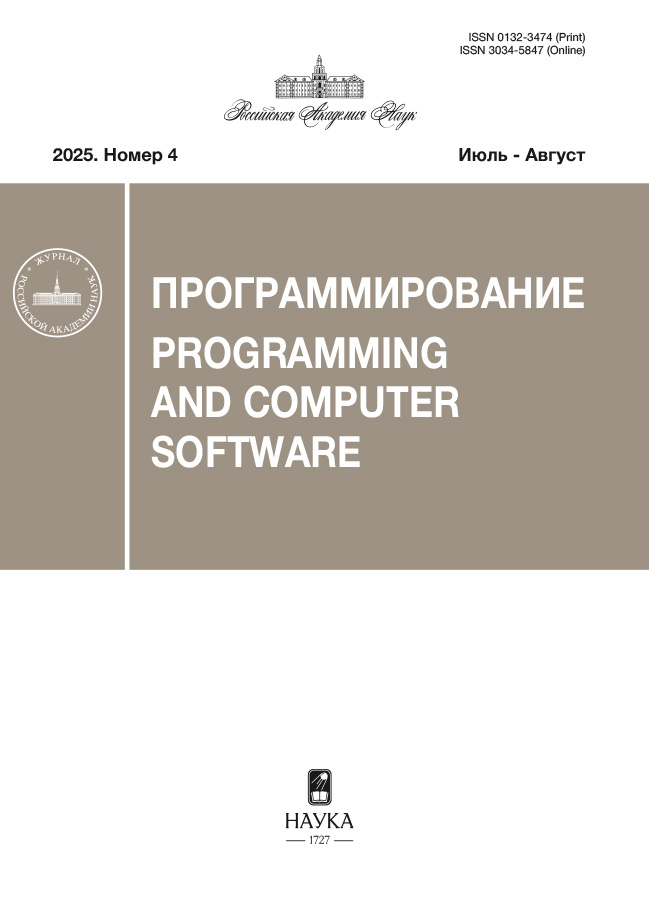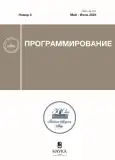Преобразование данных облака точек в 3D‑модели с помощью PointNet++ и Transformer
- Авторы: Сорокин М.И.1, Жданов Д.Д.1, Жданов А.Д.1
-
Учреждения:
- Университет ИТМО
- Выпуск: № 3 (2024)
- Страницы: 33-41
- Раздел: КОМПЬЮТЕРНАЯ ГРАФИКА И ВИЗУАЛИЗАЦИЯ
- URL: https://modernonco.orscience.ru/0132-3474/article/view/675693
- DOI: https://doi.org/10.31857/S0132347424030044
- EDN: https://elibrary.ru/QARZUT
- ID: 675693
Цитировать
Полный текст
Аннотация
В данной работе представлен подход к восстановлению 3D-моделей из данных облака точек, основанный на использовании современных архитектур нейронных сетей. Основу метода составляют PointNet++ и Transformer. PointNet++ играет центральную роль, обеспечивая эффективное извлечение признаков и кодирование сложных геометрий 3D-сцен. Это достигается благодаря рекурсивному применению PointNet++ к вложенным разбиениям входного набора точек в метрическом пространстве. Выпуклая декомпозиция, являющаяся важным этапом в подходе, позволяет преобразовать сложные трехмерные объекты в набор более простых выпуклых форм. Это упрощает обработку данных и делает процесс восстановления более управляемым. Transformer затем обучает модель на этих признаках, что позволяет генерировать высококачественные реконструкции. Важно отметить, что Transformer используется исключительно для определения положения стен и границ объектов. Это сочетание технологий позволяет достичь высокой точности при восстановлении 3D-моделей. Основная идея метода заключается в сегментации облака точек на малые фрагменты, которые затем восстанавливаются как полигональные сетки. Для восстановления отсутствующих точек в данных облака точек применяется метод, основанный на алгоритме L1-Median и локальных признаках облака точек. Этот подход может адаптироваться к различным геометрическим структурам и исправлять ошибки топологического соединения. Предложенный метод был сравнен с несколькими современными подходами и показал свой потенциал в различных областях, включая архитектуру, инжиниринг, цифровизацию культурного наследия и системы дополненной и смешанной реальности. Это подчеркивает его широкую применимость и значительный потенциал для дальнейшего развития и применения в различных областях.
Ключевые слова
Полный текст
Об авторах
М. И. Сорокин
Университет ИТМО
Автор, ответственный за переписку.
Email: vergotten@gmail.com
Россия, Санкт-Петербург
Д. Д. Жданов
Университет ИТМО
Email: ddzhdanov@mail.ru
Россия, Санкт-Петербург
А. Д. Жданов
Университет ИТМО
Email: andrew.gtx@gmail.com
Россия, Санкт-Петербург
Список литературы
- Liu N., Lin B., Lv G., Zhu A.X., Zhou L. A Delaunay triangulation algorithm based on dual-spatial data organization // PFG–Journal of Photogrammetry, Remote Sensing and Geoinformation Science. 2019. P. 19–31.
- Ivanovsky S.A., Preobrazhensky A.S., Simonchik S.K. Algorithms for computational geometry. Convex hulls: simple algorithms // Computer tools in education. 2007. P. 3–16.
- Attali D., Lieutier A., Salinas L. Vietoris-Rips complexes also provide topologically correct reconstructions of sampled shapes // Proceedings of the twenty-seventh annual symposium on Computational geometry. ACM. 2011. P. 491–500.
- Guennebaud G., Gross M. Algebraic point set surfaces. ACM Transactions on Graphics (TOG). 2007. V. 26. No. 3. Article 23.
- Qi C.R., Su H., Mo K., Guibas L.J. Pointnet: Deep learning on point sets for 3d classification and segmentation // Proceedings of the IEEE conference on computer vision and pattern recognition. IEEE. 2017. P. 652–660.
- Groueix T., Fisher M., Kim V.G., Russell B.C., Aubry M. Atlasnet: A papier-mâché approach to learning 3d surface generation // Proceedings of the IEEE conference on computer vision and pattern recognition. IEEE. 2018. P. 216–224.
- Yuan W., Khot T., Held D., Mertz C., Hebert M. Pcn: Point completion network // 2018 International Conference on 3D Vision (3DV). IEEE. 2018. https://doi.org/10.1109/3DV.2018.00088
- Yinyu Nie, Ji Hou, Xiaoguang Han, Matthias Nießner. RfD-Net: Point Scene Understanding by Semantic Instance Reconstruction // Computer Vision and Pattern Recognition. 2020.
- Ji Hou, Angela Dai, Matthias Nießner. RevealNet: Seeing Behind Objects in RGB-D Scans // Computer Vision and Pattern Recognition. 2019.
- Xiaoxue Chen, Hao Zhao, Guyue Zhou, Ya-Qin Zhang. PQ-Transformer: Jointly Parsing 3D Objects and Layouts from Point Clouds // Computer Vision and Pattern Recognition. 2021.
- Huan-ang Gao, Beiwen Tian, Pengfei Li, Xiaoxue Chen, Hao Zhao, Guyue Zhou, Yurong Chen, Hongbin Zha. From Semi-supervised to Omni-supervised Room Layout Estimation Using Point Clouds // Computer Vision and Pattern Recognition. 2023.
- Zhiqin Chen, Andrea Tagliasacchi, Hao Zhang. Learning Mesh Representations via Binary Space Partitioning Tree Networks // Computer Vision and Pattern Recognition. 2021.
- Wei Cao, Jiayi Wu, Yufeng Shi, Dong Chen. Restoration of Individual Tree Missing Point Cloud Based on Local Features of Point Cloud. Terrestrial and Mobile Mapping in Complex Indoor and Outdoor Environments. 2022.
- Qi C.R., Yi L., Su H., Guibas L.J. PointNet++: Deep Hierarchical Feature Learning on Point Sets in a Metric Space // Proceedings of the Computer Vision and Pattern Recognition. 2017.
- Zhaofeng Niu, Yuichiro Fujimoto, Masayuki Kanbara, Taishi Sawabe, Hirokazu Kato. DFusion: Denoised TSDF Fusion of Multiple Depth Maps with Sensor Pose Noises // Computer Vision and Machine Learning for Intelligent Sensing Systems. 2022.
Дополнительные файлы














